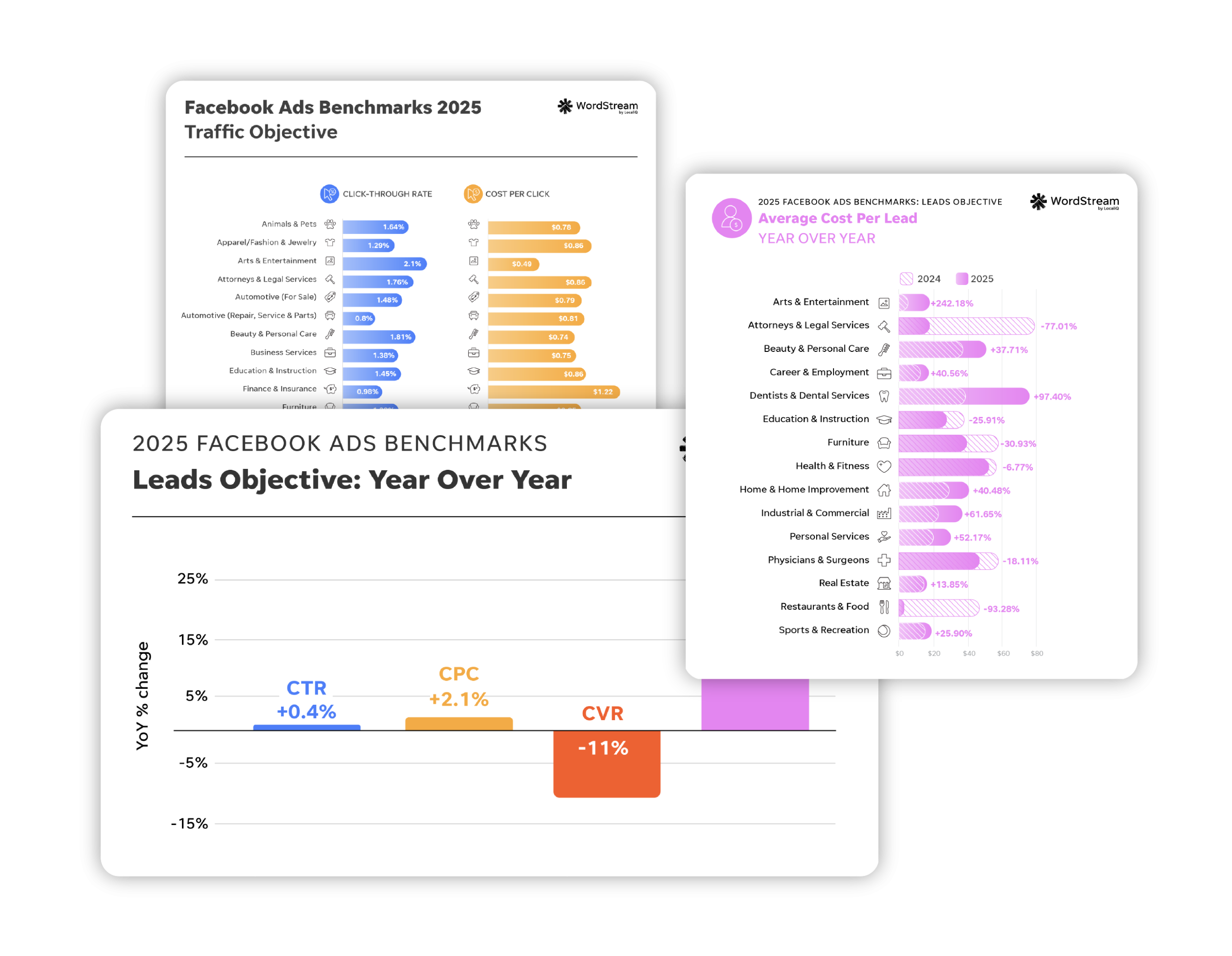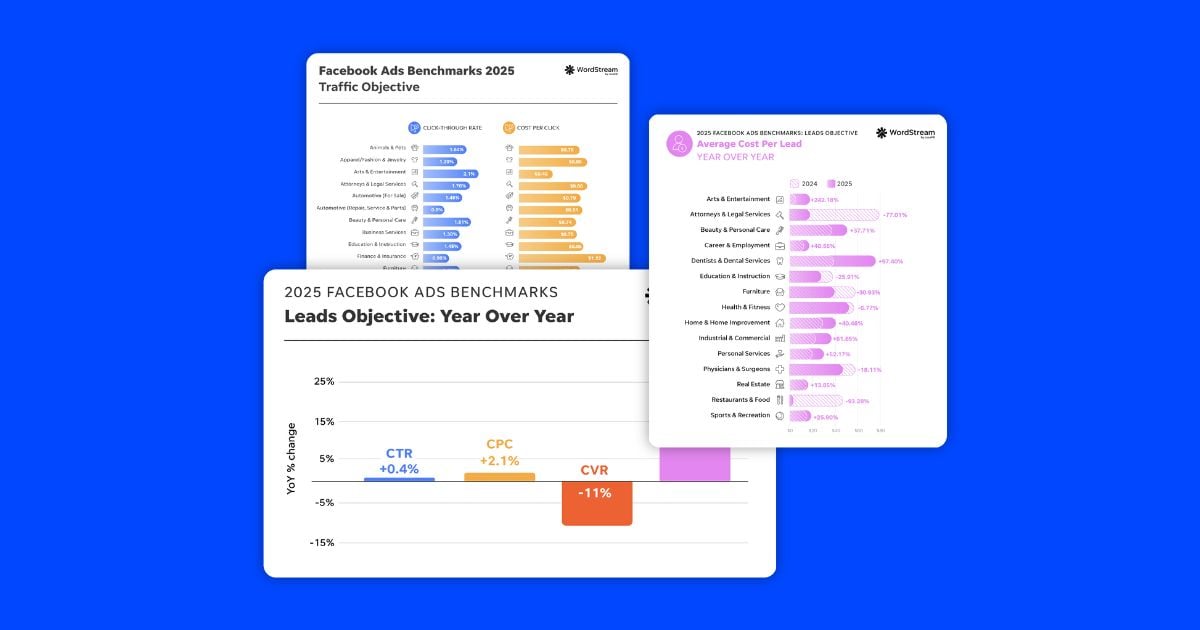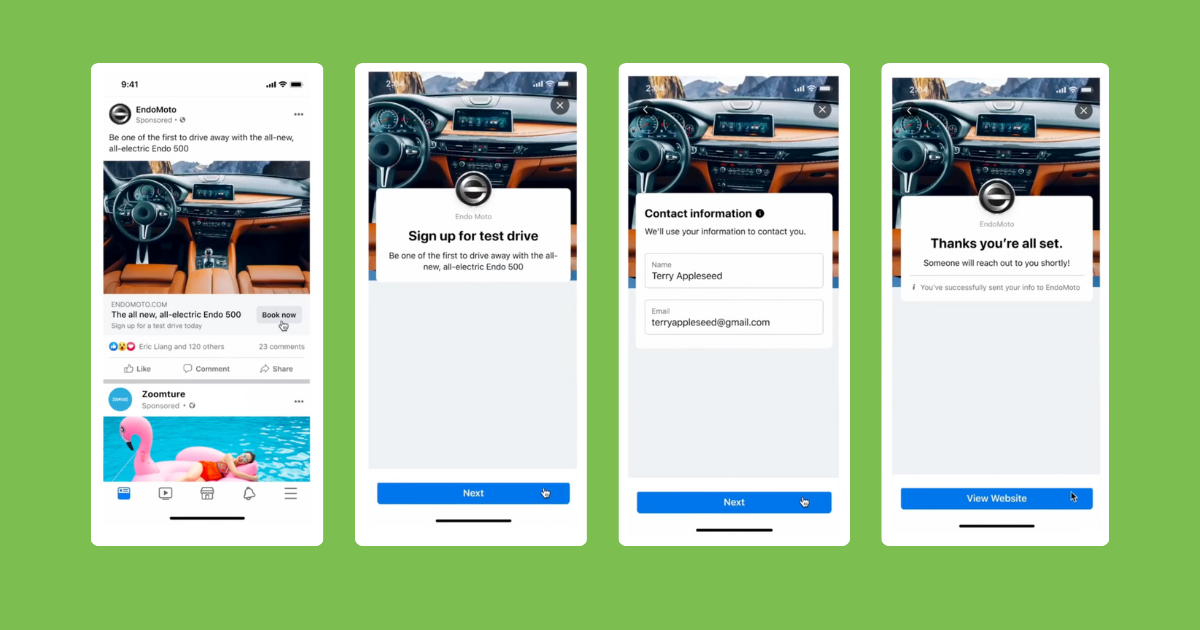Facebook advertising gives marketers almost limitless options when it comes to how you can target and promote your business across the platform, which is great for you creative types out there. That being said, taking a measured and methodical approach to how your account is structured is integral to getting the most value from Facebook ads.
To scale in Facebook, you need to have a foundation for success. You wouldn’t build your dream house without taking a few measurements, and your Facebook ad account shouldn’t be any different.

This is fine.
If you’ve read our AdWords account structure guide in the past, prepare yourself for a completely different animal; by nature, Facebook and Google AdWords are very different platforms.
One key difference that completely changes your approach from a structural standpoint is the fact that Facebook budgets are controlled at the ad set or targeting level as opposed to the campaign level. This detail allows for greater control over how much you spend on specific audiences and which ads those audiences see.
If you want to master Facebook advertising and compete with the best, you need to start off on the right foot. In this guide, I’ll outline how to build a successful and organized Facebook ad account structure that allows you to maximize the amount of control you have over your budget and performance.
Facebook Ad Account Structure: Campaign Level
Having a clear understanding of your marketing goals at the campaign level is the first step to building the foundation for your account.
How Facebook optimizes a campaign based on the chosen objective ultimately affects every decision going forward.

For example, if you want to drive traffic to your website but also drive leads for your business, you’ll want to make two separate campaigns.
The campaign with the objective to drive traffic will ideally have different ads than the one that is optimized for conversions. The reason for this lies behind how Facebook’s algorithm serves the ads.
Let’s say for example you want to send traffic to your blog but also drive traffic to a landing page with a call to action. Your approach should look something like this:
Campaign 1 – Blog: Objective – Link clicks
Campaign 2 – Conversions: Objective – Optimize for Conversions
Now what’s important to understand when creating each campaign is whether or not there will be multiple promotions within it.
Example 1:
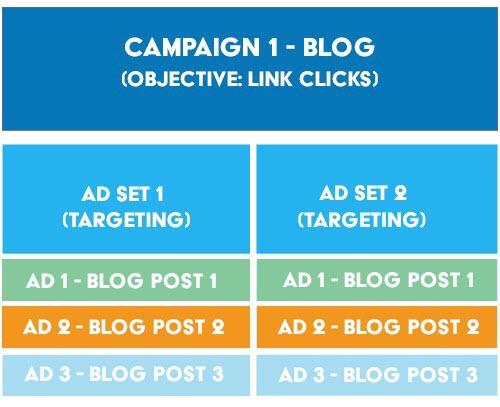
If the nature of the promotion is short term, cyclical, or frequently changed (like a variety of different blog posts) then make the campaign name relevant to the overall goal (Blog Traffic). Doing so will make organizing and reporting on the individual ad performance easier.
In this scenario, you can have multiple competing ad sets displaying the same mix of promotions within each. Facebook will optimize for the promotion that is performing the best and in each ad set you can have variability in exposure (what performs best in one ad set may not perform well in another). This makes the success (or failure) of each and the type of traffic you are driving much easier to ascertain.
If your promotion is more long-term or evergreen (as in a conversion campaign) I suggest creating separate campaigns for each individual promotion:
Example 2:
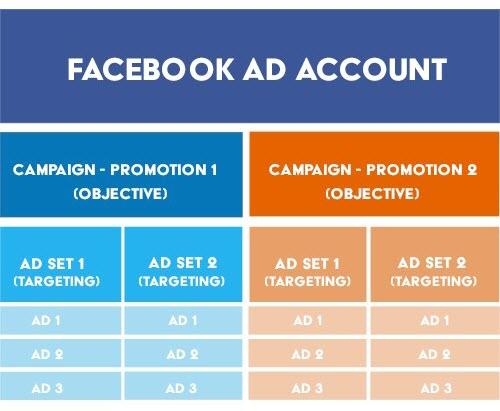
This will make strategy and optimization much easier!
You can cycle ad sets and gauge long-term CPA’s and conversion rates. You can show the same audience different variations of the same ad and assess which provides the best conversion rates and lowest costs.
The fact that everything related to each individual promotion is under the same umbrella means that you possess complete strategic control over budget allocation and can optimize according to where you are experiencing the highest return on investment.
RELATED: The Complete Guide to Google Ads Account Structure
Facebook Ad Account Structure: Ad Set Level
In order to have a full understanding of which target audiences work and which ones don’t, it’s extremely important to be organized on the ad set level. As mentioned before, this is where you will be pulling the strings in regard to spend. So, if one target audience outperforms another you can allocate more budget to the winning ad set. Taking this into consideration you’ll want to make sure there is no overlap in target audiences.
The best way to yield optimum results from a structure like this is to cycle these ad sets through your different campaigns (promotions) and assess the respective costs associated. Breaking ad sets out by targeting method is my preferred way to do this:
Targeting Method:
- Remarketing – website users
- Lookalikes of website users
- Custom List uploads
- Lookalikes of custom list uploads
- People who liked your page
- Lookalikes of people who liked your page
- Manually targeted audiences (interest/behaviors)
-
- Variation 1 – Broad
- Variation 2 – Narrow
(Further down the line)
- Conversions
- Lookalikes of conversions
Other variants that some advertisers may want to consider breaking their ad sets down by are:
- Geographic location
- Language
- Placement (i.e. Instagram, desktop, mobile)
For example: You should have one ad set targeting remarketing to website users only, one ad set for lookalikes of those users, and so on. This ensures that you can ascertain which specific segments perform best for you. If you blended many of these audiences and experienced success, then you wouldn’t necessarily know where to pinpoint that success.
Conversely, if you blended many of these audiences, some may perform well and others terribly. This would leave you with muddied, mediocre results to report on and your CPA would be inflated by the poorly performing segments.
The more refined you are at the ad set level, the more visibility you will be able to have when it comes to knowing what is ultimately working. From there you can make adjustments and improve your overall account health. The process of saving audiences is very simple:
After constructing the audience select the “Save This Audience” button:

After that, give your audience a unique name that will differentiate it from other saved audiences in your arsenal.
Facebook Ad Account Structure & Your Sales Funnel
As I mentioned above, over time you’ll want to create audiences of individuals who have already converted either in Facebook or across your site (using custom conversions, or database list uploads). This is important for two reasons:
- It allows you to exclude these users after they convert from a specific promotion (so they don’t see the same ad again)
- You can remarket to these individuals with lower funnel or upsell offers.
As you scale your Facebook ad account, this method will prove to be very useful, as you can then build campaigns for lower-funnel lead nurturing and customer marketing purposes.
The fact that you can hyper-target these individuals with relevant promotions means that you can ideally spend less and experience higher conversion rates, while producing an experience that coincides with your email marketing campaigns.
For example: When users convert on a free eBook promotion you have, you can then take those users, create an audience out of them, and subsequently serve them a follow-up promotion where the messaging is relevant to the first action they took.
Say, something like this:
“Thanks for downloading our free eBook: How to Come Back from Being Down 25 Points in the Third Quarter to Win the Superbowl. Order your New England Patriot season tickets today!”
Just as before, you have two options when doing this. You can create multiple campaigns consisting of a single promotion each, or you can create an umbrella campaign e.g. “Nurture Campaign” and show a variety of promotions to each audience.
The second approach is ideal if you have limited data or understanding of which offer performs best at each stage in the funnel. If that is the case I suggest creating what I call a “Practice Field” campaign.
The Practice Field Strategy
What I mean by “Practice Field” is that you have a single campaign and subsequent ad sets. Within those ad sets you have can have 2-4 promotions (ideally no more than 4).

From there you let the campaign run live for a period of time, giving Facebook time to optimize for the top performing ad or promotion. Like football players from the practice squad, only the best make the team. Once you have your winner, break out the promotion and ad set into its own campaign and allocate budget accordingly. Just don’t forget to pause the old practice field ad set.

You can use this method to learn how your different promotions compete with one another and which resonate with specific audiences the most. Transferring them from a practice campaign into their own campaign allows you the flexibility of both account structure strategies and gives you the insights to properly optimize.
The Value of Solid Facebook Ad Account Structure
The examples that I used in this post directly correlate to result rates. Whether you’re looking to improve campaigns or scale your Facebook ads as a whole, these methods of structuring your account are essential to your investment’s overall health.
If you consistently stuffed your face with whatever the hell Taco Bell is putting into Doritos and smoked a pack of Parliaments a day, you wouldn’t be in too great of shape. Consider this post a guide to getting those desirable Facebook abs so your business can go the distance.

